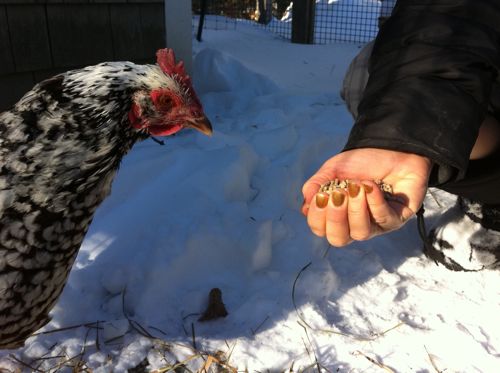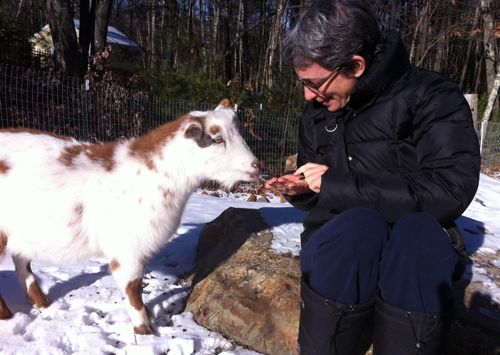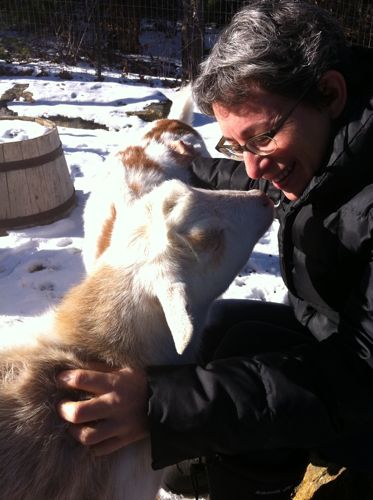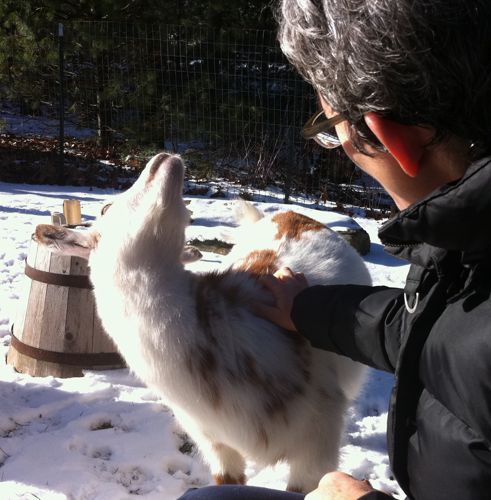My first fully-formed thought on this first day of 2011, while still in bed and still with my eyes closed, was, “I have to place my chick order.” Don’t you agree that that’s a good first thought of the New Year?
I live in a small town. The tellers at the post office know me well. Eight years after moving two miles down the road, from one house to another, they still forward the old mail. One mailman used to buy eggs from me. I’d leave them in the mailbox on top of a freezer pack. But, one thing I’ve never done is to get my chicks through the post office. Others in town have had that fun. This year, it’s my turn, and I can’t wait for the post office to call and tell me to hurry down for the peeping box.
Most large hatcheries have a minimum order of 25. Chicks don’t need to eat or drink for two days after hatching (reabsorbing the yolk takes care of those needs) but they do have to stay warm. Hatcheries have figured out that 25 crowded into a box is a healthy number. In recent years, by using heat packs, some hatcheries are now able to ship as few as three chicks. It’s a service that’s worth the expense if you aren’t able to take on two dozen fluff balls. In the past I’ve added to my flock in small increments (partly by buying chicks from my neighbors who placed the large orders.) But, in the last year, three of my chickens have died, and I have four more that are elderly and not likely to last the winter. The big barn can accommodate at least ten additional hens. I’ve been lusting after grey birds, I miss blue eggs, and I’ve wanted the deep-brown Maran eggs for no other reason than they are so pretty. It’s time to place a large order.
There are many excellent small hatcheries that sell various breeds, but to get the wide variety that I want, I need to go to a larger concern. I want all of the chicks from one place, so that they’re all the same age, have been exposed to the same germs, are on the same vaccine schedule (they’ll be vaccinated for Marek’s) and from a breeding flock that is regularly tested for diseases. I’ve selected the Meyer Hatchery because they have blue Orpingtons and Marans, as well as Speckled Sussex and classic New Hampshire Reds.
A friend in town is tacking his wish list of breeds to my order, so I’ll be getting about three dozen chicks. He’s the type of guy who buys a whole pig from a local farmer because he cares about what he eats. Two years ago he built a coop and got hens for the eggs. So, you’d think he’d order all hybrids. They’re the ones that lay everyday and all through winter. But, he’s fond of Dorkings, and, after looking through the Meyer catalog is also getting a few other fancy breeds, “just because.” That’s what happens when you get chickens.
The chicks will arrive late in March. I’ll be setting a brooder up in the big barn. I’m hoping that Lulu will go broody when the chicks come so I can tuck some under her. Steve is trying to figure out how to have a ChickCam. It’s going to be busy here this spring!
Happy New Year!




